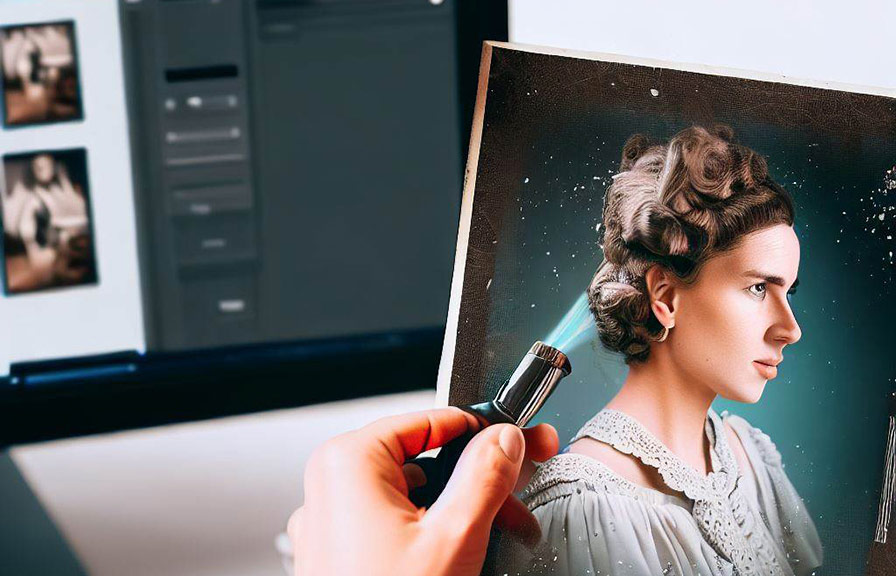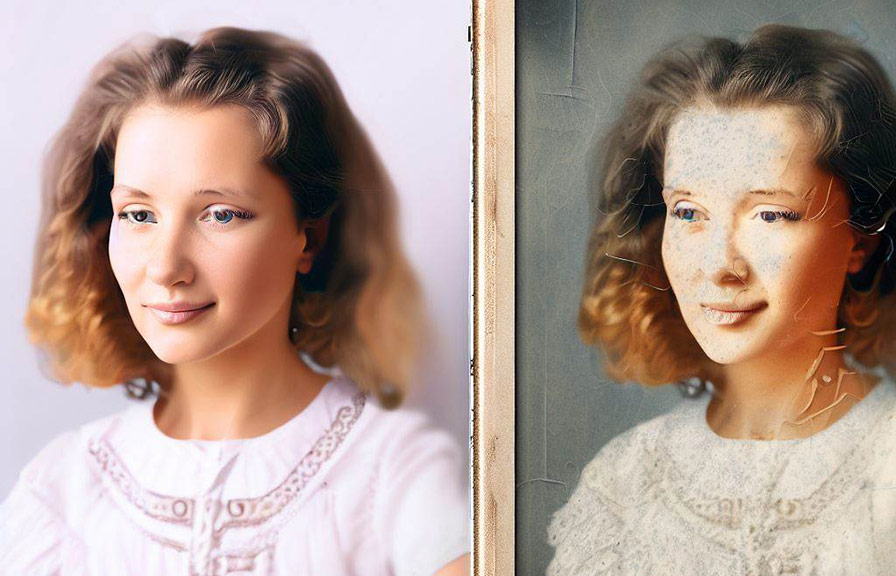Picture this: you're rummaging through your attic, and you stumble upon a box filled with old family photographs. as you sift through the images, you notice that many of them have become faded, scratched, or torn over time.
This is where the magic of ai-powered photo restoration comes in.

Ai-powered photo restoration is a cutting-edge technology that helps breathe new life into old, damaged photographs. by utilizing complex algorithms and deep learning techniques, ai can analyze and repair the damage present in these photos, preserving precious memories for future generations.
In this post, we'll explore the fascinating world of ai-powered photo restoration and how it can help you restore your cherished memories.
A brief history of photo restoration
Photo restoration is not a new concept. in fact, traditional photo restoration techniques date back to the early days of photography itself. skilled artisans would painstakingly repair damaged photographs by hand, using a variety of tools such as brushes, solvents, and retouching pencils.
This process was labor-intensive and required a high level of skill and expertise.
Fast forward to the digital age, and photo restoration has become more accessible thanks to advancements in technology. digital photo restoration involves scanning the damaged photograph, and then using photo editing software to manually correct the damage.
While this method is faster and more efficient than traditional techniques, it still requires a great deal of skill and patience.
Enter ai-powered photo restoration. this revolutionary technology is changing the game by automating the photo restoration process, making it faster and more accurate than ever before.
How ai-powered photo restoration works
Ai-powered photo restoration uses artificial intelligence and machine learning algorithms to analyze and repair damaged photographs. the process begins with a high-resolution scan of the original image. once the image is digitized, the ai analyzes the photo to identify the areas of damage, such as scratches, tears, or fading.
The ai then uses a technique called "neural style transfer" to reconstruct the damaged areas. this involves training the ai on a large dataset of undamaged photographs, allowing it to learn the patterns and textures present in the original image.
The ai can then apply this knowledge to "paint" over the damaged areas, effectively restoring the photo to its original state.
One interesting fact about ai-powered photo restoration is that it can often reveal hidden details that were previously obscured by damage. for example, in 2020, a team of researchers used ai to restore and colorize a 120-year-old photograph of the norwegian explorer fridtjof nansen.
Thanks to the power of ai, the restored photograph revealed previously unseen details, such as the texture of nansen's fur coat and the intricate pattern on his scarf.
The benefits of ai-powered photo restoration
There are several key benefits to using ai-powered photo restoration, including:
1. Speed: traditional photo restoration techniques can take hours or even days to complete, depending on the level of damage. with ai-powered photo restoration, the process can be completed in a matter of minutes.
2. Accuracy: ai can analyze and repair damage with a level of precision that is difficult to achieve through manual methods. this results in a more accurate restoration that stays true to the original image.
3. Accessibility: in the past, photo restoration was a specialized skill that required years of training and experience. with ai-powered photo restoration, anyone can quickly and easily restore their damaged photographs without the need for specialized knowledge or expertise.
4. Cost-effectiveness: traditional photo restoration services can be quite expensive, with prices ranging from $50 to several hundred dollars per image. ai-powered photo restoration is typically more affordable, making it accessible to a wider range of individuals.
The future of ai-powered photo restoration
As ai technology continues to advance, we can expect to see further improvements in the field of photo restoration. future developments may include the ability to restore even more heavily damaged photographs or the integration of ai-powered photo restoration into consumer-grade photo editing software.
Conclusion
Ai-powered photo restoration is a remarkable technology that has the potential to preserve our cherished memories for generations to come. by harnessing the power of artificial intelligence, we can breathe new life into old, damaged photographs, ensuring that the stories and moments they capture are never lost to time.
